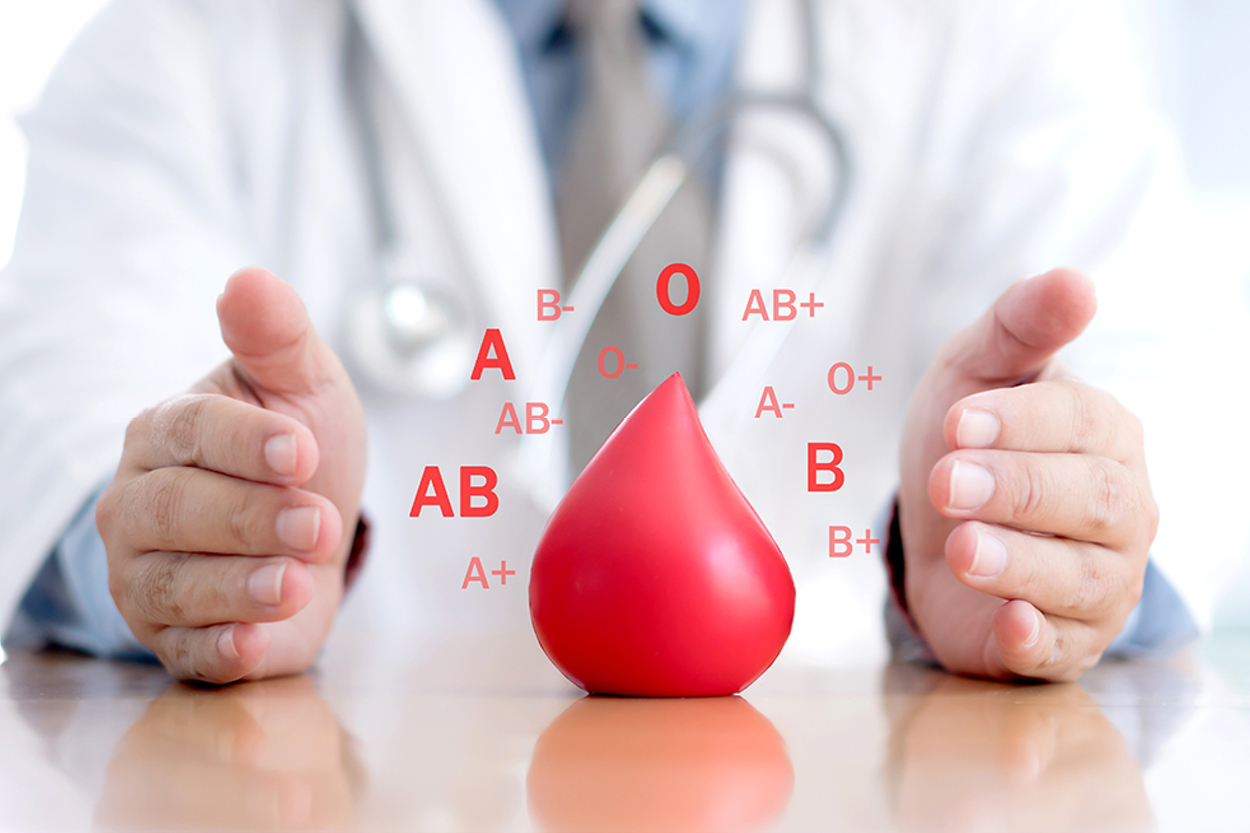Discover how blood type is determined
Donating blood is a simple way to make a significant impact on the lives of others. As we honor National Blood Donor Month this January, it’s important to shed light on how the gift of blood donation is vital to helping save lives. Do you know your blood type and what blood type is safe to receive if you need a transfusion?
4.5 million Americans receive a transfusion each year, which is why it’s crucial to know your blood type and compatibility in case you ever need a transfusion. There are a variety of reasons why someone might need a transfusion, including undergoing surgery, combating cancer, a severe injury, treating a chronic illness, or delivery difficulties during labor. There are four major blood types – A, B, AB, and O. Like eye color, blood type is determined by the genes you inherit from your parents. Blood types are determined by the presence or absence of two antigens, A and B, on the surface of red blood cells. In addition to the A and B antigens, there is a protein called the Rh factor, which can be either present (+) or absent (–), creating the eight main blood types: A+, A-, B+, B-, O+, O-, AB+, and AB-.
Type A Positive:
-
1 in 3 people have A+ blood.
-
A+ blood is the second most common blood type, which generates high demand.
-
Patients undergoing chemotherapy treatments have a high demand for platelets present in people with A+ blood.
Type A Negative:
-
Only 1 in 16 people have A- blood.
-
People with A- blood can donate to anyone with a blood type of A or AB regardless of the positive or negative.
-
If you have A- blood, you can only receive A- or O- blood.
Type B Positive:
-
About 9% of the population have B+ blood.
-
B+ red blood cells can be given to both B+ and AB+ patients.
-
B+ patients can receive blood from B+, B-, O+, and O- donors.
Type B Negative:
-
Less than 2% of the population have B- blood.
-
B- red blood cells can be given to both B and AB patients. B- patients can only receive blood from other B- donors or type O- donors (universal donors).
Type O Positive:
-
38% of the population has O+ blood, making it the most common and highest demanded blood type.
-
O+ red blood cells are not universally compatible to all types, but they are compatible to any red blood cells that are positive (A+, B+, O+, AB+).
-
Over 80% of the population has a positive blood type and can receive O+ blood.
-
In major traumas with massive blood loss, many hospitals transfuse O+ blood, even when the patient’s blood type is unknown. The risk of reaction is much lower in ongoing blood loss situations and O+ is more available than O-. Type O+ blood is critical in trauma care.
-
Those with O+ blood can only receive transfusions from O+ or O- blood types.
-
O+ blood is one of the first to run out during a shortage due to its high demand.
Type O Negative:
-
About 7% of the population have O- blood.
-
O- is the universal blood type and the most common blood type used for transfusions when the blood type is unknown.
-
The O- blood type can only receive O- blood.
-
Due to the versatility of O- blood for transfusions, it is in high demand and the blood of choice for emergency transfusions. For example, just one car accident victim can require up to 100 units of O- blood.
-
O- is the first blood supply to run out during a shortage due to its universality.
Type AB Positive:
-
Less than 4% of the U.S. population have AB+ blood.
-
The AB+ blood type is known as the “universal recipient” because AB+ patients can receive red blood cells from ALL blood types.
Type AB Negative:
-
Less than 1% of the U.S. population have AB- blood, making it the least common blood type.
-
Patients with AB- blood can receive red blood cells from all negative blood types.
Knowing your blood type is critical for many reasons. Whether you need a life-saving blood transfusion, have surgery, or are donating blood, don’t wait until an emergency to find out your blood type. Being aware of your blood type is important for preventing the risk of receiving an incompatible blood type if a transfusion is needed. If the wrong blood types are mixed, it can lead to a clumping of blood cells that can be potentially fatal. For those with rare blood types the supply can be limited, which is why it’s especially important to know your blood type if it’s rare.
Donating your blood goes beyond the simple step of donation; it’s a profound way to share the gift of life with others. If you are eligible to donate blood, consider doing so during National Blood Donor Month to help save lives and support those in need.
Sources:
American Red Cross: Facts About Blood and Blood Types
American Red Cross: Why is Type A Blood so Important
American Red Cross: Why is Type B Blood so Important
American Red Cross: Why is Type O Blood so Important
American Red Cross: Why is Type AB Blood so Important

